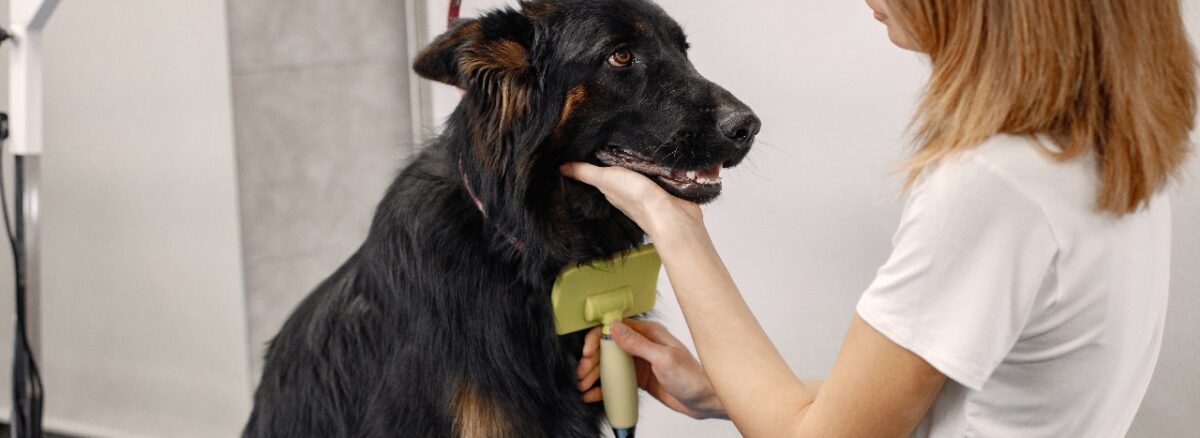Creating Awareness Among Pet Parents
Long-haired dogs like Shih Tzus, Lhasa Apsos, Afghan Hounds, Golden Retrievers, and Collies are known for their stunning, luxurious coats. But with that beauty comes the responsibility of regular grooming. Without proper care, their long fur can easily become tangled, dirty, and uncomfortable — even leading to skin infections and behavioral issues. That’s why at-home grooming is essential not only for keeping your dog looking great but also for maintaining their health and happiness.
This guide offers practical tips and awareness to help pet parents groom long-haired dogs efficiently at home.
-
1. Understand Your Dog’s Coat Type
Each long-haired breed has a different coat texture — some are silky and straight, while others are dense and curly. Knowing your dog’s coat type helps you choose the right brushes, shampoos, and techniques. Double-coated breeds (like Golden Retrievers) require different care compared to single-coated breeds (like Maltese).
Tip: Ask your vet or groomer about your dog’s coat type and recommended grooming frequency.
-
2. Daily Brushing Prevents Painful Mats
Mats (tangled clumps of hair) form quickly in long-haired dogs, especially behind the ears, under the legs, tail base, and chest. Daily brushing is key to preventing this.
Tools to use:
- Slicker brush for removing tangles and loose hair
- Metal comb for finishing and checking for hidden mats
- Dematting rake for breaking up stubborn knots gently
Tip: Be gentle and patient while brushing. Pulling hard can hurt your dog and make grooming stressful for them.
-
3. Bathing — Not Too Often, Not Too Rare
Bathing keeps the coat clean and shiny, but too much bathing strips natural oils. A good rule of thumb is once every 3–4 weeks, or sooner if your dog gets dirty.
Steps:
- Brush before bathing to remove mats.
- Use a mild dog shampoo formulated for long-haired breeds.
- Rinse thoroughly — leftover shampoo can irritate the skin.
- Use a dog conditioner to soften and detangle hair.
Tip: Avoid human shampoos as they’re not pH-balanced for dogs.
-
4. Drying is as Important as Washing
Leaving a long-haired dog wet or damp can cause mats or even cold-related issues. After a bath, always dry your dog completely.
How to do it:
- Use a towel to gently blot (not rub) excess water.
- Use a pet dryer or low-heat hairdryer with a brush to fluff and straighten the coat.
- Ensure your dog is in a warm room and feels comfortable throughout the drying.
Tip: Always brush again after drying to ensure smooth and tangle-free hair.
-
5. Trimming and Hygiene Care
Trimming doesn’t always mean full haircuts. Even long-haired dogs need regular trimming in certain areas for hygiene and comfort:
- Around the eyes to prevent irritation and improve visibility.
- Paws and pads to avoid slipping or dirt buildup.
- Rear-end and belly area for cleanliness.
Tip: Use blunt-tip grooming scissors and keep your dog calm. For major trims, consider a professional groomer.
-
6. Nail Clipping is Part of Grooming
Long nails can cause discomfort, walking problems, or even lead to injury. Check your dog’s nails every 2–3 weeks.
Tip: Use a dog nail clipper or grinder and avoid cutting into the “quick” — the pink area inside the nail that has nerves and blood vessels.
-
7. Check and Clean Ears and Eyes
Long-haired dogs are prone to ear infections and tear staining. Clean their ears once a week with a vet-approved ear cleaner and cotton pad.
For tear stains:
- Use a damp cloth or pet-safe eye wipes to clean around the eyes gently.
- Keep the face trimmed to avoid hair poking into the eyes.
-
8. Teach Your Dog to Love Grooming
Start grooming early in life. Make grooming a calm, positive experience by:
- Giving treats and praise
- Grooming in short sessions
- Not forcing or rushing the process
When your dog associates grooming with love and attention, it becomes easier for both of you.
-
9. Stay Alert for Skin Issues
While grooming, always look for:
- Redness or irritation
- Bald patches
- Ticks or fleas
- Dry or flaky skin
Tip: Regular grooming helps you catch health problems early before they become serious.
-
10. When to Visit a Professional Groomer
Despite your best efforts, sometimes a professional groomer is needed — especially for full trims, severe matting, or seasonal grooming. Most long-haired dogs benefit from a professional grooming session every 6–8 weeks.
-
Final Words
Grooming your long-haired dog at home may seem like a big task at first, but it’s a rewarding bonding experience. It keeps your pet clean, healthy, and happy while saving you frequent trips to the groomer. With the right tools, techniques, and a little patience, you can make grooming a pleasant part of your dog’s routine.
Remember: A well-groomed coat isn’t just about looks — it’s a reflection of your dog’s health and your care.
Share This Post

